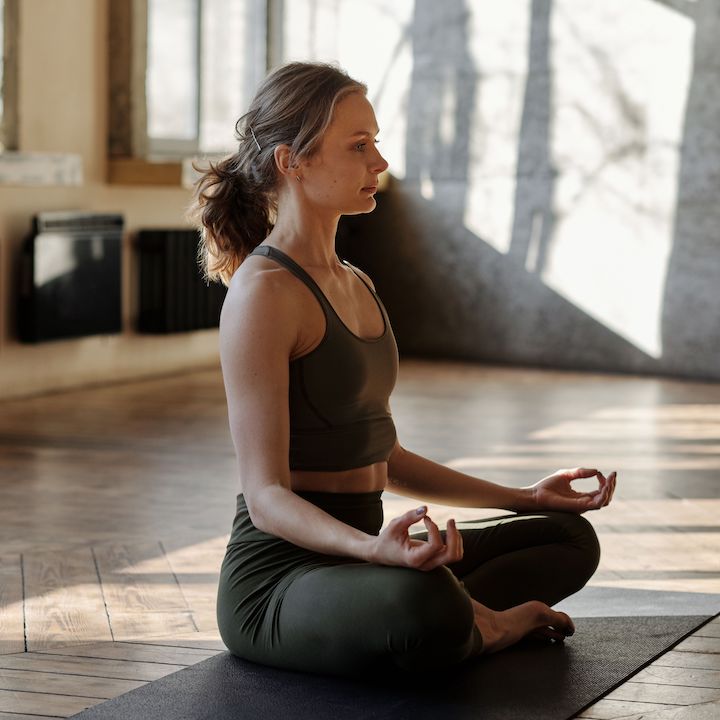

Do you struggle with maintaining proper posture? You’re not alone. With the growing demands of the modern world, many of us are leading increasingly sedentary lifestyles which can have a detrimental effect on our posture.
But don’t worry! Physical therapy can be an effective way to improve your posture and help you live a healthier and pain-free life.
For over benefits of physical therapy, check out our complete guide to physiotherapy.
In this article, we’ll explore the importance of proper posture in physical therapy, and how it can help you achieve long-term health benefits.
Having good posture can have a huge impact on your overall health and well-being, so take care of yourself and don’t forget to stand tall! Practising proper posture can help to prevent pain and improve flexibility, which can be beneficial for those undergoing physical therapy.
Proper posture involves keeping your neck, spine and hips aligned and your feet flat on the ground. It also requires that you keep your shoulders back and your back straight. This will help you maintain good balance and posture and reduce stress on your body.
 Photo Credit: Andrii Torianyk
Photo Credit: Andrii Torianyk
By practising proper posture, you can avoid the pain and discomfort associated with poor posture while also increasing your flexibility and range of motion. This can be especially beneficial for those participating in physical therapy, as it can help to improve the effectiveness of the treatment and reduce the risk of injury.
By ensuring that your posture is correct, you can help to ensure that your physical therapy sessions are as successful as possible.
You can benefit from stretching and strengthening exercises to improve your mobility and reduce pain. In fact, research shows that stretching can reduce pain intensity by up to 50%.
Stretching and strengthening exercises can help you improve your postural awareness, body mechanics, and muscular balance. This allows you to move more easily and with less pain. They can also help you develop better posture, reducing stress and strain on joints, muscles, and tendons, and reducing the risk of injury.
When engaging in stretching and strengthening exercises, it’s important to take your time and move slowly and deliberately. It’s also important to breathe deeply and focus on maintaining proper form. Doing so can help you reap the maximum benefit from your stretching and strengthening exercises.
Additionally, it’s important to listen to your body and stop any exercise if you feel any pain or discomfort. With proper stretching and strengthening exercises, you can gain the benefit of improved mobility and reduced pain.
By incorporating posture alignment techniques into your daily activities, you can reap the rewards of improved mobility, reduced pain, and better overall well-being. Proper posture helps to maintain a healthy spinal curvature, decrease muscle tension, and can even reduce fatigue.
 Photo Credit: Karolina Grabowska
Photo Credit: Karolina Grabowska
Physical therapy, when combined with posture alignment techniques, can help people to maintain the proper posture needed to reap these benefits. Alignment techniques involve training your body to maintain the best posture for your particular body type. This can entail learning to keep your spine in its natural curves, strengthening the muscles in your stomach and back, and being mindful of your posture while sitting, standing, and even sleeping.
With regular practice and reinforcement, these techniques can become second nature and help your body maintain better posture as you move through your day.
Improving your desk setup with ergonomic principles can help you feel more comfortable and energized throughout the day. An ergonomic desk setup can include an ergonomic chair that provides support and helps maintain correct posture, an adjustable desk that can be customized to fit your body and posture, and desktop accessories like wrist rests and footrests to reduce strain and fatigue.
Ergonomic principles are essential for physical therapists and their patients. Proper posture, while seated, can help reduce the risk of developing chronic pain, prevent fatigue, and improve focus and productivity. By adjusting their desk setup to fit their body and posture, physical therapists can ensure their comfort and well-being.
Ergonomic chairs and adjustable desks are great investments for patients to make, as they can help maintain proper posture and prevent any discomfort or fatigue.
Making healthy habits a part of your daily routine can be key to maintaining a healthy lifestyle and avoiding future issues. As a physical therapist, it’s important to encourage your patients to practice good posture and make healthy lifestyle changes. Meditation techniques and lifestyle changes can be beneficial for maintaining good posture and avoiding physical issues down the line.
 Photo Credit: Cliff Booth
Photo Credit: Cliff Booth
One of the best ways to learn healthy habits is to practice them every day. This can be done by setting small, achievable goals and slowly building them up. For instance, if a patient is having trouble sitting up straight, they can start with just 5 minutes of good posture a day and gradually increase the time. Making small lifestyle changes can also help. For example, adding stretching or yoga to the patient’s daily routine can help them stay limber and prevent future injuries.
| Activity | Time | Frequency |
|---|---|---|
| Sitting up straight | 5 minutes | Daily |
| Stretching | 10 minutes | 3 times a week |
| Yoga | 15 minutes | Twice a week |
By consistently practising good posture and making small lifestyle changes, your patients can develop good habits that will help them maintain a healthy lifestyle. Through repetition, these habits will become second nature, and your patients will find it easier to make healthy choices.
Now that you’ve learned the importance of developing good habits and how to maintain proper posture, let’s discuss how to improve balance. Balance is essential for physical therapists to help their patients gain stability and strength.
By incorporating stability training and core training into your practice, you can help your patients improve their balance and overall physical health. Here are four ways to help your patients improve their balance through physical therapy:
By incorporating these four methods into your physical therapy practice, you can help your patients improve their balance and overall physical health. With improved balance, your patients will be able to move with more ease and confidence.
Working with a physical therapist can be a great way to help you gain stability, strength, and confidence in your movement. Physical therapists are experts in body alignment who understand the mechanics of how your body moves and how to help you achieve your goals.
They can use reflexology practices to help you move more efficiently and reduce pain. By engaging in physical therapy, you can improve your posture and balance while receiving professional guidance and support.
Your physical therapist will assess your posture, muscle strength, and range of motion to identify any areas of imbalance and weakness. They will then work with you to create a personalized plan of exercises, stretches, and treatments that are tailored to your individual needs.
With regular visits and adherence to your physical therapist’s instructions, you can make significant improvements to your posture and balance. Furthermore, you can gain a greater sense of confidence and control in your movements.
Gaining an extra level of support and stability through assistive devices can give you the extra push you need to take your movement to the next level.
Proper shoes and comfort devices are essential for those undergoing physical therapy. Wearing the right shoes can help reduce the risk of injury, as well as improve balance, comfort, and stability. Comfort devices, such as a cane, crutches, or a walker, can help you maintain proper posture and mobility throughout the physical therapy process.
 Photo Source: DiversifyLens
Photo Source: DiversifyLens
By using the right assistive devices, you can ensure that you are able to stay safe and comfortable during your physical therapy sessions. Additionally, these devices can help you to focus on reaching your goals during physical therapy, as they offer an extra level of support and stability.
Using assistive devices can be a great way to ensure that you are able to progress successfully and reach your physical therapy goals.
Correcting your posture is essential for maintaining a healthy proper posture. As a physical therapy patient, you should practice ergonomic exercises for at least 15 minutes a day to maintain proper form.
This will help you stay in the habit of sitting or standing correctly and reduce the risk of pain and injury. Not only will this help you during physical therapy, but it will also reinforce the benefits of proper posture in your daily life.
Having poor posture can have serious consequences on your body. Not only can it cause immediate physical discomfort, but it can also lead to long-term health issues.
Poor posture can lead to headaches, neck and shoulder pain, nerve damage, and decreased circulation. It can also cause fatigue, tension, and poor concentration.
To prevent these issues, it’s important to practice preventive measures, such as posture correction exercises, to maintain proper posture. With regular practice, you can improve your posture and reduce your risk of pain and health issues.
When you’re trying to improve your posture, it’s easy to make mistakes. From using improper techniques to muscle imbalances, joint pain and more, the potential risks of incorrect form are high.
It’s important to focus on the basics: maintain a straight spine, relax your shoulders, and ensure that your arms, legs, and head are in alignment. Allusion is also key; if you can imagine your body as a stack of blocks, you can easily visualize the proper posture.
Avoiding these common mistakes and focusing on a proper form can help you achieve the best posture for your body.
Want to know if your posture is affecting your physical health?
An easy way to tell is to be mindful of your body’s alignment and become aware of any areas of tension or discomfort. Correcting any misalignments in your posture can help relieve pain and improve your overall well-being.
Pay attention to your body and adjust accordingly to ensure that your posture isn’t adversely affecting your physical health.
You can improve your posture even without the help of a physical therapist! In fact, 83% of adults report that their posture improved after using wearable tech and ergonomic furniture. Investing in the right tech and furniture can be a game-changer for your posture, and all you need to do is incorporate them into your everyday life.
Wearable tech such as posture correctors can guide you through exercises to improve your posture, and ergonomic furniture can help support you in the right positions. Making these small changes can help you feel empowered to take control of your physical health and improve your posture.
You now have the tools to help improve your posture. Proper posture can have a big impact on your overall physical health, so make it a priority. Think of it like a suit of armour: it’ll help protect your body and keep you safe.
Working with a physical therapist can help you take your posture to the next level, and proper ergonomics and habits can help keep it there. Taking care of your posture is a journey, but with the right knowledge and attitude, you’ll be well on your way.
There are no results matching your search.
Reset